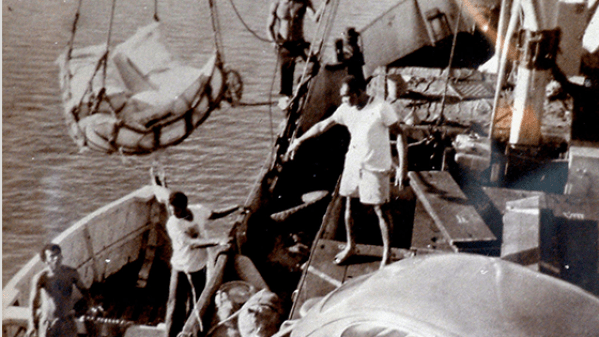The history of Solway Lass - Tallship
In 1902, Solway Lass was built in Holland for a Hamburg based shipping company. The original name for Solway Lass was Stina. Designed as a sail-powered cargo ship, the hull being built with German Blue Steel, she was strong to handle heavy loads and seaworthy for the unforgiving North Sea.
In 1905 she was renamed to Adolf, and was sailing the Baltic and North seas under the German flag as a Coastal Trader. When WWI broke out, the British Navy seized coastal trading vessels to establish a fleet of vessels to sail in front of the Merchant Fleet which was being torpedoed by the German Submarines. Solway Lass was turned into a “Q” ship for the British Navy and served the merchant navy during the war.
Read more/less
After WWI she was sold by the Navy to a shipping company in the Solway Firth in Scotland, which is where the name Solway Lass first originates. Back to work as a cargo vessel. In WWII, Solway Lass was taken back by the Germans, who used her as a supply ship before hitting one of their own mines while leaving a harbour. Dramatically, her hull had a hole blown in the side, however, the crew was able to move the boat to shallow water. Quickly repaired and Solway Lass was back to work as a supply ship for the German war effort.
After the war in 1949 sold to the Danish Shipping Company and named “Sundeved.”
Solway Lass sailed the South Pacific during the 1970s and 1980s as a Coastal Trader. In 1983, Sydney Businessman Tim Lloyd who owned Matilda Cruises purchased Solway Lass and between 1983 and 1985 spent over $1million on a major restoration project at Berrys Bay in Sydney. From 1985 to 1998 Solway Lass was welcomed as Sydney’s Tall Ship sailing the Harbour. In 1999, Solway Lass was purchased by Australian Tall Ship Cruises and Explore Whitsundays and sailed to the Whitsunday Islands. After a 3 month refit, Solway Lass commenced 3 night Whitsunday Tall Ship Sailing Adventures in May 1999. Today regular refits and maintenance works keep Solway Lass presenting a fine figure as she sails the Whitsundays.
Photos: the Greenways from Manchester owned Solway Lass. Photo of Solway Lass in the Solway Firth Scotland in 1920s.
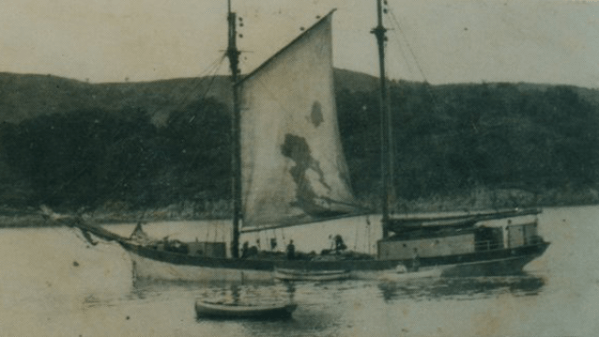
March 1937 Solway Lass ran aground on Sandymount Beach, Dublin.
Solway Lass left Liverpool England on 10th March 1937 heading for the Wicklow Corn Company with coal on board. About twenty miles off the Irish Coast, the coastal trader ran into gales. The engine failed and Solway Lass was blown onto the Beach. The local lifeboat went out to assist but was unable to be of any help. Efforts to shoot a lifeline failed owing to the distance from shore.
The cargo of coal had to be unloaded in order to get Solway Lass refloated. This was a slow operation as horse-drawn drays were used and only small amounts could be taken at a time. Garda John Conway (police) arrived on the scene and interviewed Captain Anderson and crew members William Payne and Joseph Canning. The captain told the garda that the crew was safe. Eventually, the ship was refloated and returned to port for repairs.
Reports suggest that the community of Sandymount had enough coal courtesy of Solway Lass to keep their stoves fired up over the winter of 1937-38.
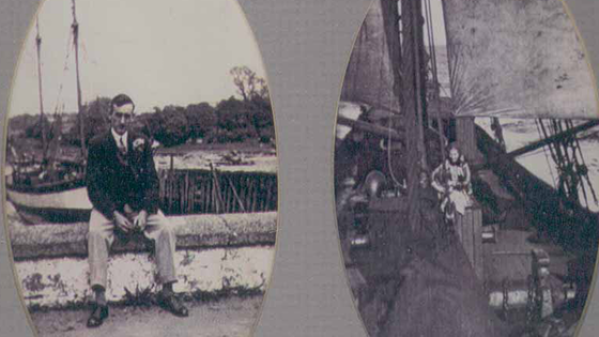
Solway Lass | This article was published in the Galloway News in March 1987.
Written by David R Collin who lives in the Solway Firth Scotland.
I read with great interest of the history of “Solway Lass” in the Galloway News and the longer I looked at the photograph of her tied up near Palnackie, the more certain I became that I had seen her before, A brief check provided me with evidence to fill a gap in her long career.
I left Kirkcudbright in 1974, to live and work in Fiji, and was quickly drawn to the waterfront in the capital city of Suva, where a colourful and varied fleet of trading vessels is based.
Read more/less
Fiji is a group of several hundred islands, most of which are served by the Government of Fiji’s fleet of locally designed and built ships and a great array of privately owned trading vessels, which carry cargoes and passengers of every kind to some of the most idyllic places in the world.
Among these ships were several sailing vessels, and one in particular, called “Sundeved” caught my eye with her rakish sheerline and minimal deckhouse. She had recently arrived from what were then the Gilbert and Ellice Islands, via Wallis and Fotuna, and had begun to trade in Fiji’s waters with an English master/ owner and a Fijian crew. Her Danish name of “Sundeved” was soon painted over and she was given the Fijian name of “Lawendua”
Lloyds register of shipping for 1968/1969 reveals that “Sundeved” (Register no 534473) was formerly named “Bent”, and “Bent” was formerly none other than “Solway Lass”
In 1976, I was sent by my employer, the Government of Fiji, to the island of Kandavu, 65 miles south of the main island of Viti Levu, to arrange the siting of six new houses at the government station of Vunisea. “Lawendua” was chartered and we sailed at 5.00 am on November 4th with a Public Works Department supervisor called Motufanga and all the necessary materials, including six kitchen sinks! As we motored out of Suva harbour through the main passage in the protecting coral reef, we met the long swell of the Pacific Ocean and even our cargo of concrete blocks and cement could not prevent us from rolling heavily.
Breakfast consisted of an animated fried egg, which the cook had intended to nestle in a bed of tinned spaghetti. A commotion broke out when a lee rigging screw came adrift and clanged against the wheelhouse before disappearing over the side. The cook’s best endeavours followed the rigging screw shortly afterwards.
By lunchtime, we were in the lee of the Great Astrolabe reef, which is said to have some of the clearest water and most beautiful fish and coral anywhere, except of course for Palnackie! Lunch of mutton curry, dalo and cassava was eaten on deck, as the beautiful islands of Dravuni, Bulia, and Ono were left to port. Before the sun had gone down we had steered cautiously through the jagged coralheads of Namalata reef, guided by a Polaroid bespectacled lookout aloft, and anchored at the tiny settlement of Vunisea. Motufanga and I went ashore to hire men from the village to unload our cargo into a fleet of canoe-like smallcraft, known in Fiji as punts, and work began immediately.
Three days later, on completion of unloading and our work ashore, we set sail for Suva with an empty hold, but one extra passenger in the form of a very excited pig. The sails concerned consisted of a brand new mizzen and two elderly staysails, which the skipper hoped would add a knot or two to our leisurely pace. Due to the power and enthusiasm of the crew however, she was sheeted in far too hard, and with the wind on her beam, made nearly as much leeway as headway. We arrived at Suva wharf in the small hours of the morning on November 7th, and Motufanga, the pig and I walked into town to find a taxi. A few days later, the pig was eaten and Motufanga was sent to prison, but that is another story! All three of us had good reason to savour our freedom and adventure aboard “Lawendua”
“Lawendua” was at that time the Cinderella of the waterfront, and went unnoticed by the throngs of tourists. She was a hard worked vessel whose master and crew struggled to compete for cargoes in a difficult market. I feel privileged to have had the opportunity to travel in both distance and in a sense in time to experience the lifestyle that has been hers and that of her crews for so many years. She was still trading in Fiji when I left there in 1980.
“Solway Lass” is now restored as a historic sailing vessel.
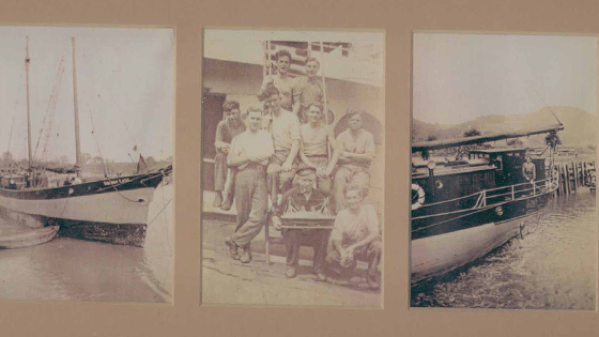
Story by Travel Writer Sue Fuller after sailing the Whitsundays on Solway Lass
“If you haven’t sailed the Whitsundays, you haven’t lived,” When I clambered aboard the beautiful old tallship, Solway Lass at Airlie Beach, life so noticeably slowed that I could have tossed my watch overboard. For the next three days and nights, meal times were heralded by delicious aromas and “cocktail hour” began when the sun dipped a reasonable distance towards the horizon.
In 2002, Solway Lass celebrated her 100th birthday, having started her life as a sail powered cargo vessel, built in 1902 in the Netherlands.
She’s had a long and tumultuous history, and the Solway’s crew love to share her colourful past with a maximum of 32 guests on board at any one time.
Read more/less
Seized as a prize of war by the British in 1915 and used as a Q-ship during World War One, she was again seized by the Germans in World War Two, before being badly damaged by a mine. After the war, the Solway Lass set sail for warmer waters and plied the South Pacific as a cargo vessel, eventually falling into disrepair.
Totally rebuilt, Solway Lass took pride of place in the 1st Fleet re-enactment during our Bicentennial Year before travelling north to the Whitsundays, where she is understandably the pride and joy of Airlie Beach-based Southern Cross Sailing Adventures.
With 10 sails and 5,500 square feet of sail area, this is sailing for grown-ups in fully-catered comfort! You can do as little or as much as you like, and during our voyage, nearly everyone joined in the fun of learning to hoist and trim sails or have a go at taking the helm.
While the creak and groan of timber deck is an age-old sound, rest assured life below deck is comfortably modern. Solway Lass is air-conditioned and has 11 cabins for 32 guests, with a choice of double or twin cabins or four-share. There’s a bar, and bathrooms complete with hot showers; just the thing for rinsing off the day’s salt water. Appetites were unfailingly hearty and food on the Solway Lass was fresh, delicious and plentiful.
We covered around 90 nautical miles (160km), exploring beautiful spots including Whitehaven Beach, Blue Pearl Bay on Hayman Island, Mantaray and Nara Inlet and stopping to snorkel, scuba dive and swim on the island coral fringing reef. By around 4:30pm each day in a calm anchorage we often tied up with one of Southern Cross’s ex-racing yachts, including famous Whitbread maxi, British Defender.
The Solway Lass departs on its three day/three night trips from Airlie Beach every Tuesday and Saturday at 7:30pm. All meals are included.
